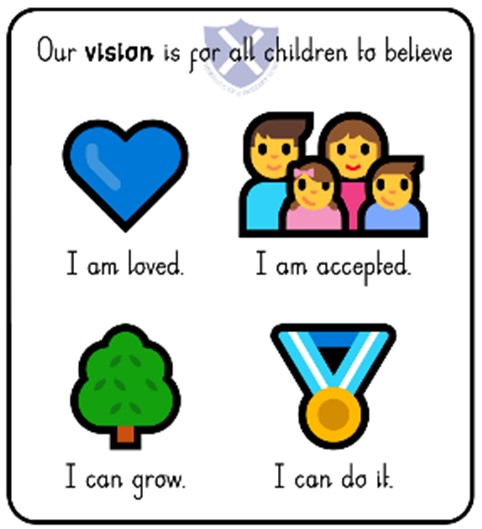Design and Technology
Intent
Here at Netherton Church of England, the Design and Technology (D&T) curriculum aims to inspire and instil our young designers with a sense of respect, acceptance and self-worth. By promoting these values, we strive to not only prepare them for the challenges they'll encounter but also empower them to navigate the complexities of an increasingly technologically driven world with the confidence and vision, ‘I can do it’. In a nurturing atmosphere, our children are encouraged to collaborate, communicate and reflect upon the iterative process of designing, making and evaluating. The D&T curriculum has been carefully mapped across the school to ensure children’s knowledge and skills progresses increasingly throughout the phases, allowing them to truly grow and flourish.
In the realm of D&T, we hope to encourage our children to unleash their creativity and innovation by fostering an environment where students feel valued for their unique perspectives and abilities.
Moreover, by emphasising our school vision, that each student is unconditionally loved and accepted, we are reinforcing the idea that each possesses inherent worth and dignity. This affirmation can serve as a powerful motivator, inspiring them to approach challenges with resilience and integrity.
Ultimately, by combining technical proficiency with values of respect, acceptance, and love, we strive to equip our young designers with the tools they need to grow and succeed, making a positive impact in both their professional careers and their communities; not just shaping the individual child but also a positive future where compassion and creativity thrive hand in hand.
Implementation
To ensure high standards of teaching and learning, we have designed a comprehensive curriculum that aligns and enhances that which is described in the National Curriculum. Every opportunity to integrate design and technology concepts with other subjects such as science, mathematics and art has been taken to ensure learning is reinforced and a holistic educational experience is provided.
Each year group undertakes three modules of D&T per year, delivered weekly in alternate half-terms. These modules have been carefully selected to progressively build on, and develop prior knowledge and skill. Furthermore, each module follows the five stages set out in our road-map: research, design, practice, make, evaluate.
Design and Technology is an inspiring, rigorous and practical subject. It encourages children to think and intervene creatively to solve problems both as individuals and as members of a team. As teachers, it is our role to help, encourage and support our children to develop their knowledge and skills by providing them with opportunities to explore, experiment and approach challenges in their own creative, unique way before reflecting upon their experience and using their findings to inform future designs. Here at Netherton, we prioritise hands-on activities with differentiated instruction to ensure that all students can be successful and apply theoretical knowledge practically, at their own pace.
Our assessment in Design and Technology is varied and authentic, incorporating a mix of formative and summative assessments, subject leader observation, work scrutiny, staff feedback, self and peer assessments as well as, importantly, pupil voice. It provides students with opportunities to demonstrate their learning through research, design, practical tasks and presentations. We use our assessment practices to help inform teaching and learning, support student progress, and promote a deeper understanding of Design and Technology concepts.
Impact
By the end of Year 6, children will have acquired a range of skills and attributes that will prepare them for the challenges ahead. They will have learnt to take risks, fostering resourcefulness, innovation, and entrepreneurship. Through the study of past and present Design and Technology, they will have gained a critical understanding of its impact on daily life and the broader world. The emphasis on analytical thinking, design, and construction will have equipped them with a coherent knowledge base and understanding of products and the product design processes prevalent today. Their expanded acquisition of key vocabulary and knowledge will enable them to articulate and comprehend more complex concepts. While our comprehensive assessment approach serves as a vital pathway through which we gather insights to continually inform, guide and adapt our curriculum. Overall, we believe that through their primary D&T career, our children will have developed the skills and knowledge necessary to navigate their journey towards becoming capable and engaged citizens in an ever-evolving technological society.
Characteristics of a Design Technician
- Significant levels of originality and the willingness to take creative risks to produce innovative ideas and prototypes.
- An excellent attitude to learning and independent working.
- The ability to use time efficiently and work constructively and productively with others.
- The ability to carry out thorough research, show initiative and ask questions to develop an exceptionally detailed knowledge of users’ needs.
- The ability to act as responsible designers and makers, working ethically, using finite materials carefully and working safely.
- A thorough knowledge of which tools, equipment and materials to use to make their products.
- The ability to apply mathematical knowledge.
- The ability to manage risks exceptionally well to manufacture products safely and hygienically.
- A passion for the subject and knowledge of, up-to-date technological innovations in materials, products and systems
Potential Careers
- Sound engineer
- Graphic designer
- Video game developer
- Mechanical engineer
- Interior designer
- Construction manager
- Fashion designer
- Architect
- Steel fabricator
- Electrical engineer
- Product designer
Road Map
DT Road Map

